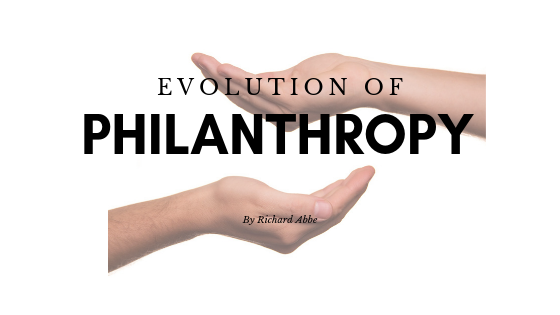The evolution of the word philanthropy dates back over 2,500 years to the fifth century BC, when the ancient Greeks first used the term in the myth Prometheus Bound. When Zeus threatens to destroy mankind, Prometheus shows his humanity-loving character, or “philanthropos tropos” by gifting humans with two things: fire and hope. This leads to optimism and an improvement over the human condition. There are two parts to the word philanthropos: “philos”, meaning to care for; and “anthropos,” meaning human being.
Throughout the 15th and 16th centuries, as the medieval world was falling apart, politics and religion began to restructure. Within towns and cities, a new social order began to form in Europe as a result of the Reformation. Catholicism began to unleash its power over institutions. Meanwhile, the Ottoman Empire was growing, with powerful dynasties ruling over Japan and China. All of these developments greatly impacted the development of philanthropy. Instead of just giving to religious institutions, people were now also giving to the state. It also started becoming a global phenomenon.
A few centuries later, the Napoleonic Wars and the American Revolution created a higher rate of orphans, widows, and refugees. In addition, industrialization during this period emphasized the issues of workers’ rights and unfair working conditions. This changed the previous concept of philanthropy and people started seeing it as a way to improve the overall quality of life for regular people. This, in turn, created two branches of charity: one to service private reformation needs and one to satisfy a responsibility to the public.
Between the late 1800s and 1930, an upper class of philanthropists and activists began to take over the scene. One such person was Andrew Carnegie. He was an author who wrote the Gospel of Wealth, in which he encouraged older wealthy people to distribute their wealth for the public good. He cited areas such as education, culture, science, and public health as the areas needing the most help. These changes had a national and worldwide impact on the idea of philanthropy.
The practice continued to evolve in response to major events in the 20th century, such as a general decline in economic conditions. This caused the government to get more involved in social welfare and it essentially rewrote the guidelines for privatized philanthropy. During World War II, charities focused on supporting the soldiers by providing materials, money, and services. A great number of philanthropic organizations were encouraged to turn professional.
When the civil and human rights movements grew, philanthropic organizations increased in support for various minority causes, a trend which continues today.

